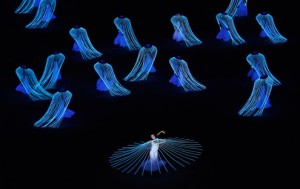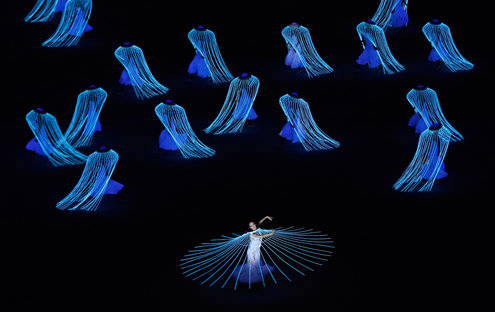
Despite the numerous controversies surrounding the Sochi Olympics, the ballet performances in the Opening Ceremony were swell to watch. The show may have been a little uncomfortable at times – skipping over Stalin’s purge of Russia – which carefully emphasized Putin’s control of Russia. Nevertheless, there was the classical music, music like Stravinksy and Tchaikovsky, and Russian ballet that were laced throughout the show.
The ballroom scene from Tolstoy’s “War and Peace” spotlighted some of Russia’s most famous ballet dancers, including Svetlana Zakharvova, of the Bolshoi Ballet, as Natasha Rostova, and Vladmir Vassiliev as Natasha’s father. Towards the end of the program came Russia’s rendition of the doves of peace, using the score from Tchaikovsky’s Swan Lake, starring Russia’s ballet star Diana Vishneva.
Though the performances may have been nostalgic, the ballet pieces were timeless. The poetic, classical performance really tells a story without using any words.
There could not be a winter Olympics in Russia without the ballet, as Russia hones the ballet world. Russia had produced George Balanchine, one of the greatest choreographers of all time and the co-founder of the New York City Ballet. The Marinsky and Bolshoi Ballet, located in Russia, are also widely recognized around the world today.
The Russian government used its resources and planning to make ballet the center of Russia, which brought the country to its “national and international glory.” While politics may not be in Russia’s favor, the ballet is a widely recognized art form, thus making ballet the ideal center segment of the Opening Ceremony. Russian ballet has left its imprint around the world, as many ballet schools and studios “boast” of using the particular technique. And what makes this style unique, is the sheer talent and technique that they pride on, as Brian Palmer claims, “Sometimes at the expense of subtlety and artistic expression.” Whatever it is, when one sees the Russian ballet, one will be surely impressed.
So the next question is, why is ballet, or any form of dance, not recognized as an Olympic sport?
In the widely recognized magazine among dancers, Dance Magazine, Margaret Fuhrer compiled a list of opinions on the question, “Should dance be in the Olympics?” In this 2012 article, everyone collectively agreed that dancers are athletes, but the question is, why is dance not a sport?
The concerns was that although dance requires the same amount of work as other sports in the Olympics, it cannot be objectively critiqued like the other sports in the Olympics. The biggest concern is that purely critiquing on technique, as most Olympic sports are, does not justify dance, as dance is subjective. It is rather mundane to see a dancer just pull out tricks. The ideal dancer is one who can not only dance, but show that he or she loves to dance, and that requires talent.
Dance may be better off on stage and not in the Olympics. I guess figure skating and rhythmic gymnastics will have to do.


One Comment on “Ballet in the Winter Olympics”